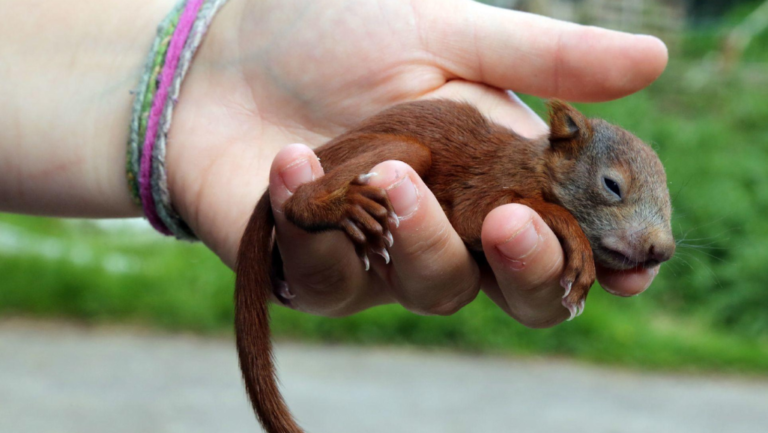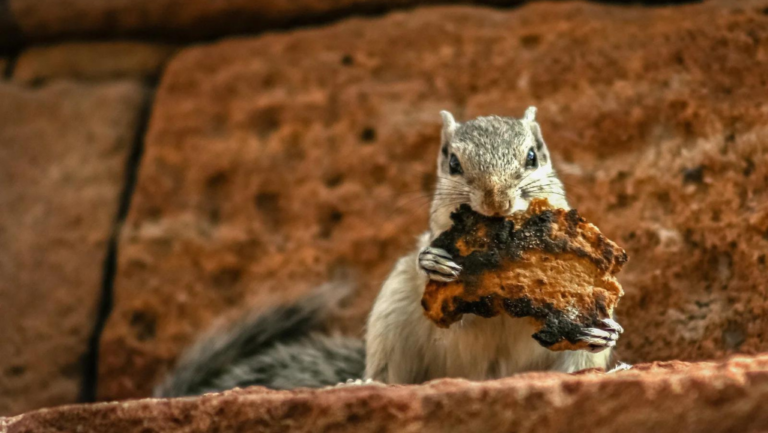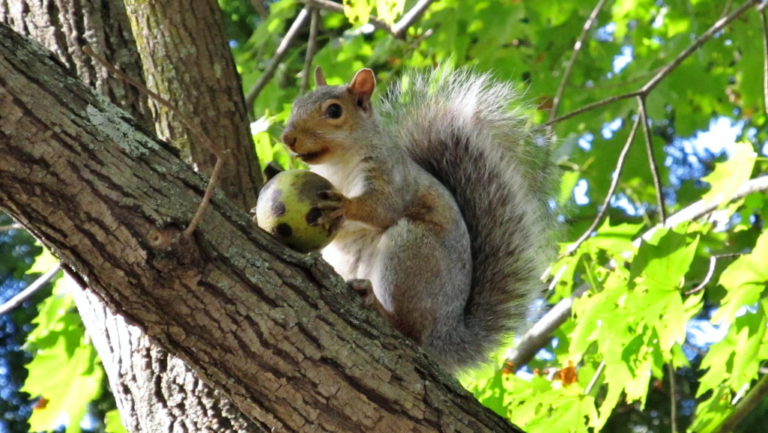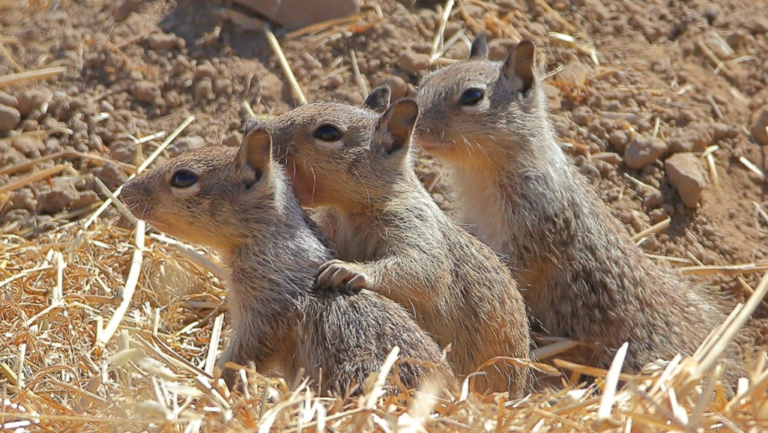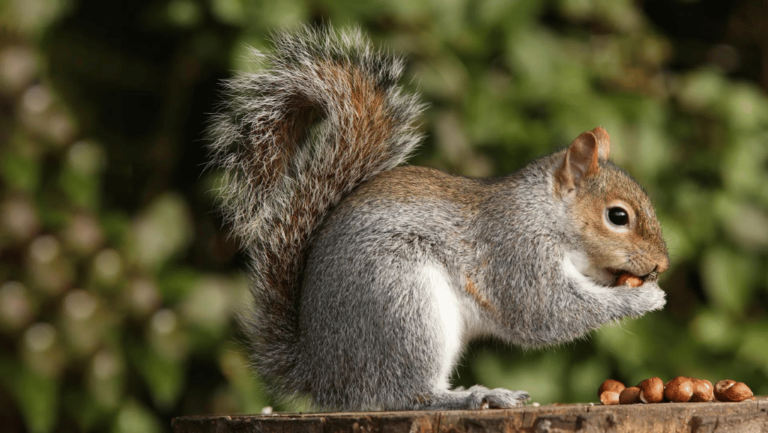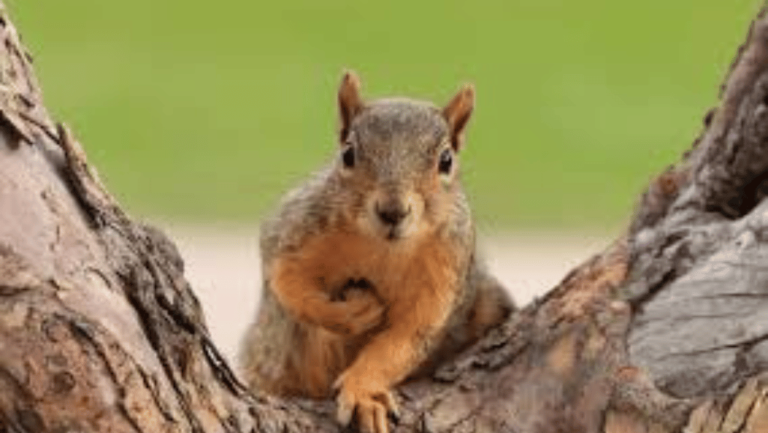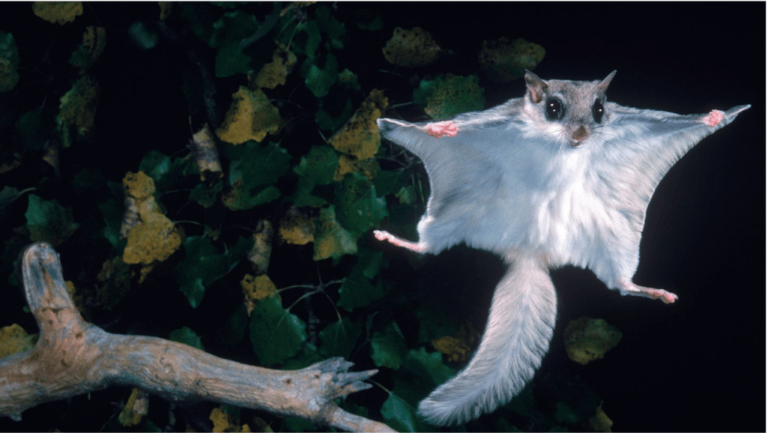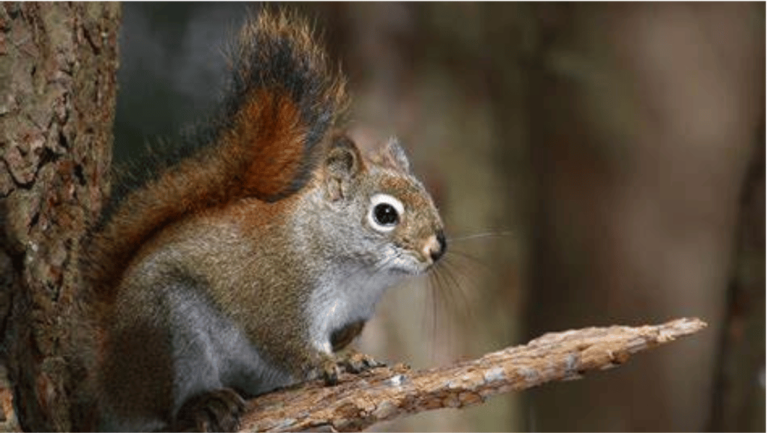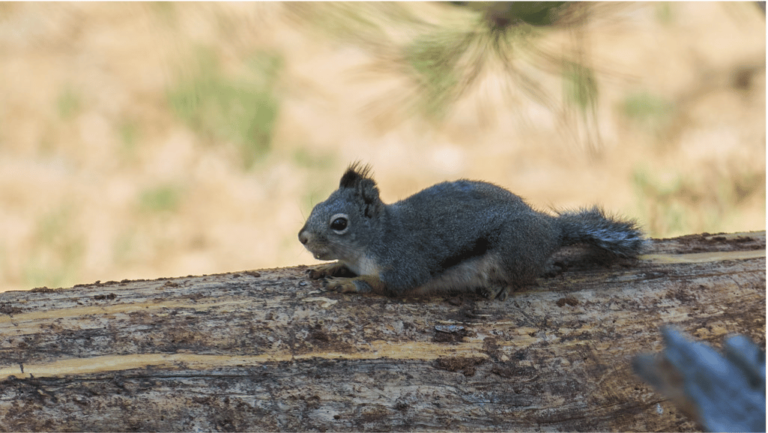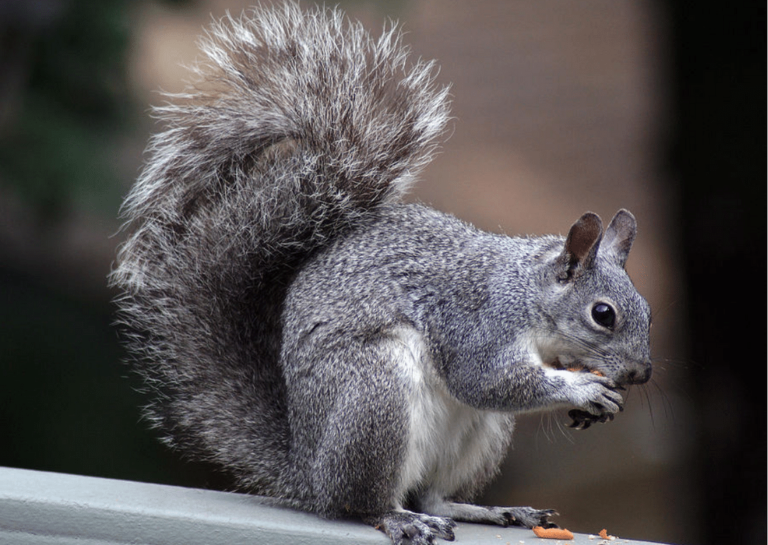The Black Giant Squirrel, also known as the Malayan Giant Squirrel, is a large tree squirrel found in the tropical rainforests of Southeast Asia. It is native to countries such as Thailand, India, Myanmar, Vietnam, and Indonesia. This species is considered near threatened due to habitat loss and overhunting. Its habitat consists of subtropical and tropical coniferous and broadleaf forests, where it spends most of its time in the tree canopies. The Black Giant Squirrel is an important part of the biodiversity in these ecosystems and plays a crucial role in seed dispersal.
Key Takeaways:
- The Black Giant Squirrel is a large tree squirrel found in the tropical rainforests of Southeast Asia.
- It is native to countries such as Thailand, India, Myanmar, Vietnam, and Indonesia.
- The Black Giant Squirrel’s habitat consists of subtropical and tropical coniferous and broadleaf forests.
- This species is considered near threatened due to habitat loss and overhunting.
- The Black Giant Squirrel plays a crucial role in seed dispersal and is important for the biodiversity of Southeast Asian rainforests.
Physical Description of the Black Giant Squirrel
The Black Giant Squirrel, one of the largest species of squirrels in the world, possesses unique physical attributes that distinguish it from other squirrel species.
The average weight of the Black Giant Squirrel ranges from 1.05 to 1.25 kg, which contributes to its impressive size. They measure approximately 34 to 37 cm in length from head to tail. However, it is the squirrel’s long and eye-catching tail that truly sets it apart. With a tail length of up to 17 inches, the Black Giant Squirrel uses this appendage for various purposes, including balance, communication, and navigation through the dense vegetation of its habitat.
The Black Giant Squirrel exhibits distinctive coloration patterns as well. The upperparts of this species are typically dark brown to black, providing camouflage in the forest canopy. In contrast, the underparts are light buff-colored. In specific regions, the back and tail hairs may feature light tips, creating a slightly paler appearance. It is noteworthy that the Black Giant Squirrel displays sexual dimorphism, meaning that males and females share similar physical characteristics and coloration.
Squirrel Physical Characteristics:
| Physical Characteristics | Details |
|---|---|
| Average Weight | 1.05-1.25 kg |
| Head-to-Tail Length | 34-37 cm |
| Tail Length | Up to 17 inches |
| Coloration | Dark brown to black (upperparts), Light buff-colored (underparts) |
| Sexual Dimorphism | Yes |
Understanding the physical description of the Black Giant Squirrel provides valuable insights into its adaptation to its habitat and further highlights the magnificence of this species.
Range and Conservation Status of the Black Giant Squirrel
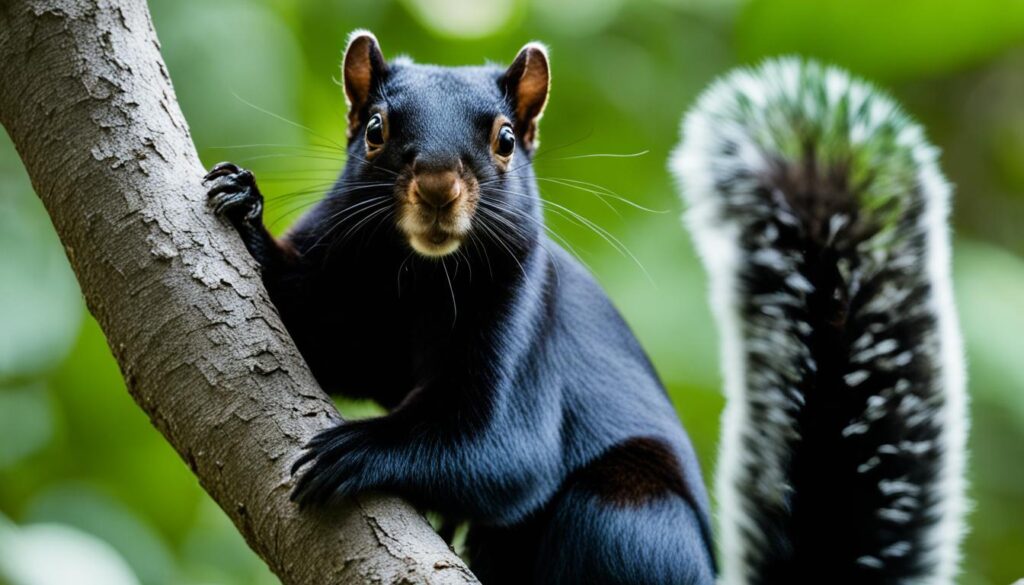
The Black Giant Squirrel has a wide range that includes countries in Southeast Asia such as Thailand, India, Myanmar, Vietnam, and Indonesia. However, its population has been declining due to habitat loss caused by deforestation, human settlement, and agriculture. As a result, the species is listed as near threatened by the IUCN.
Conservation efforts are being made to protect the habitat of the Black Giant Squirrel and raise awareness about the importance of preserving this unique species. In some regions, laws and regulations have been implemented to reduce hunting and safeguard the Black Giant Squirrel from further harm.
Conservation Efforts for the Black Giant Squirrel
The conservation status of the Black Giant Squirrel necessitates proactive intervention to mitigate the threats it faces. Efforts are underway to address the challenges and protect its habitat from further degradation.
| Conservation Actions | Status |
|---|---|
| Establishment of protected areas | Ongoing |
| Promotion of sustainable forestry practices | Ongoing |
| Community-based initiatives for conservation | In progress |
| Environmental education and awareness programs | Active |
The establishment of protected areas and the promotion of sustainable forestry practices contribute to the preservation of the Black Giant Squirrel’s habitat. Community-based initiatives engage local communities in conservation efforts, fostering a sense of stewardship for the species. Environmental education and awareness programs aim to educate the public about the importance of biodiversity and the need to protect the Black Giant Squirrel and its habitat.
By implementing these conservation actions and collaboration among stakeholders, there is hope for the future of the Black Giant Squirrel in Southeast Asia. Protecting its habitat is crucial not only for the survival of this unique species but also for the preservation of the region’s biodiversity.
Behavior and Diet of the Black Giant Squirrel
The Black Giant Squirrel, a fascinating arboreal species, showcases unique behavior and a diverse diet. Understanding these aspects contributes to our knowledge of this magnificent creature’s way of life.
Behavior
The Black Giant Squirrel is an arboreal species, spending the majority of its time in the lush canopies of trees. Its remarkable agility allows it to navigate the branches with ease, using its long tail for balance. This species is diurnal, meaning it is active during the day.
Though primarily solitary, Black Giant Squirrels may form small groups during the mating season. During this time, males engage in breathtaking acrobatics to attract females. Once mating is complete, they return to their solitary habits.
Diet
Their diet showcases their adaptability. Black Giant Squirrels have an extensive menu consisting of pine cones, seeds, fruits, nuts, and leaves. These resourceful creatures are known to collect food in preparation for periods of scarcity, efficiently utilizing the abundant resources available to them.
This captivating image captures the Black Giant Squirrel in its natural habitat, showcasing its arboreal behavior and highlighting its beauty. It illustrates the grace and agility with which this remarkable creature moves through the tree canopies.
In summary, the Black Giant Squirrel’s behavior and diet reveal its adaptability and resourcefulness. Its arboreal nature, diurnal habits, and solitary tendencies define its unique character. The diverse range of food sources it consumes allows this species to thrive in its natural habitat, making it a vital contributor to the delicate balance of Southeast Asia’s ecosystems.
Conclusion
The Black Giant Squirrel, native to the tropical rainforests of Southeast Asia, is a remarkable species that is currently facing threats from habitat loss and overhunting. However, conservation efforts are underway to protect its habitat and ensure the survival of this unique mammal.
Preserving the habitat of the Black Giant Squirrel is of utmost importance not only for the survival of the species itself but also for the overall biodiversity of the tropical rainforests in Southeast Asia. These ecosystems rely on the presence of diverse species to maintain a healthy balance.
Through habitat protection and conservation efforts, we can contribute to the preservation of the Black Giant Squirrel and the rich biodiversity it represents. These efforts not only benefit the species directly but also have a positive impact on the surrounding ecosystems and the countless other species that depend on them.
Frequently Asked Questions
What is the habitat of the Black Giant Squirrel?
The Black Giant Squirrel is found in the tropical rainforests of Southeast Asia.
What is the physical description of the Black Giant Squirrel?
The Black Giant Squirrel is one of the largest species of squirrels in the world, with a long tail and a dark brown to black coloration on its upperparts.
What is the range and conservation status of the Black Giant Squirrel?
The Black Giant Squirrel is native to countries such as Thailand, India, Myanmar, Vietnam, and Indonesia, and it is listed as near threatened due to habitat loss.
What is the behavior and diet of the Black Giant Squirrel?
The Black Giant Squirrel is an arboreal species that primarily feeds on pine cones, seeds, fruits, nuts, and leaves.
Why is habitat protection important for the Black Giant Squirrel?
Protecting the habitat of the Black Giant Squirrel is crucial for its survival and for maintaining the biodiversity of Southeast Asian tropical rainforests.




